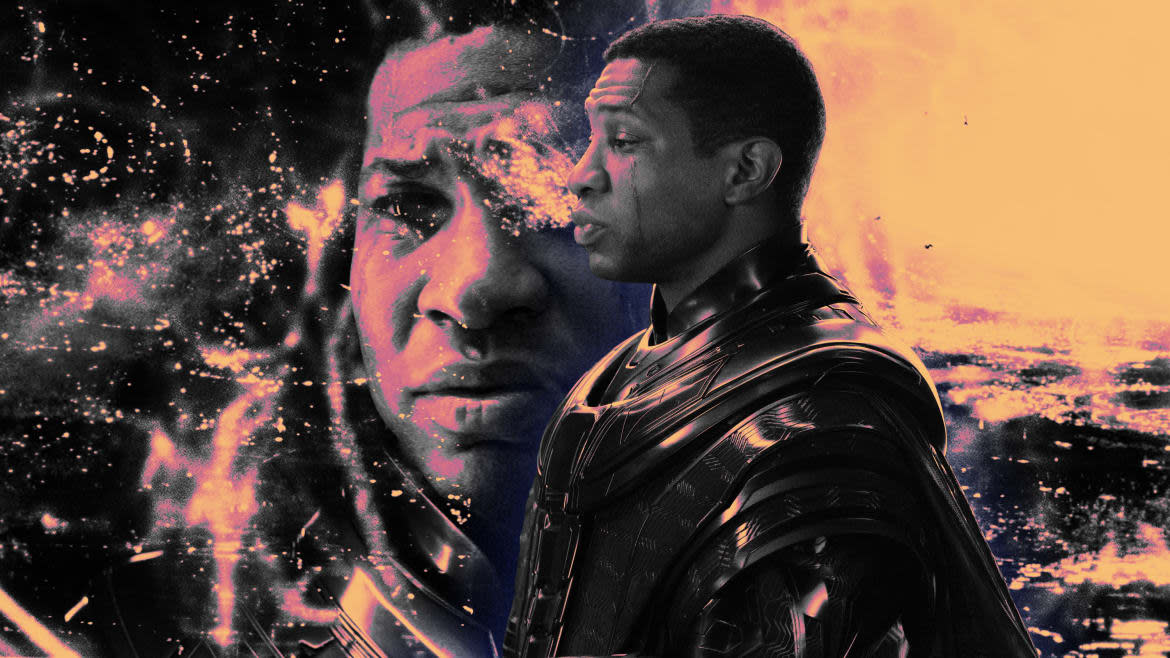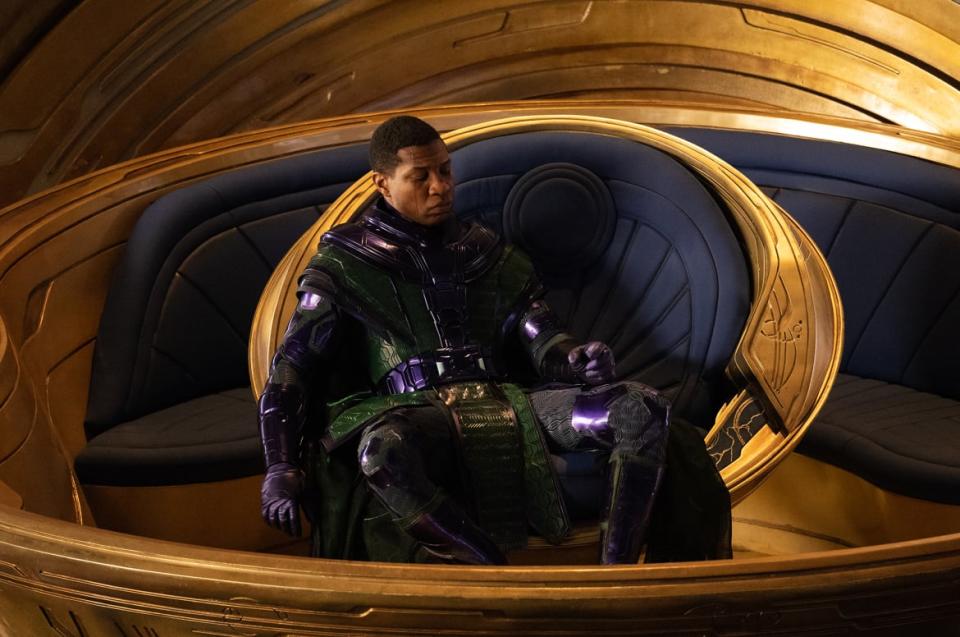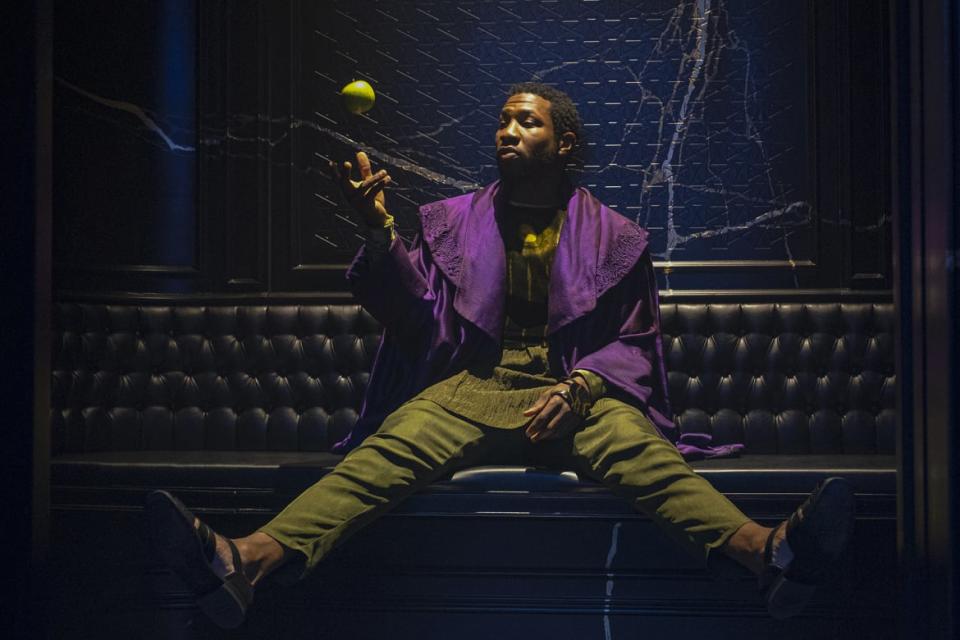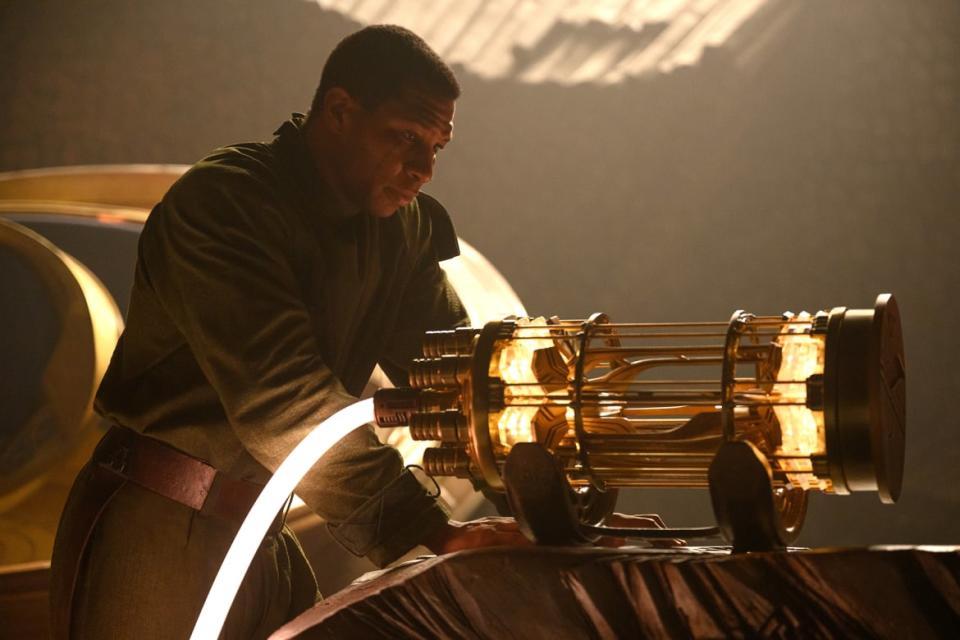‘Ant-Man and the Wasp: Quantumania’: Get Ready for a Lot More Kang the Conqueror

- Oops!Something went wrong.Please try again later.
- Oops!Something went wrong.Please try again later.
Ant-Man and the Wasp: Quantumania has given us our first big-screen look at Kang the Conqueror (Jonathan Majors), a man trapped in the Quantum Realm and keen to make up for lost time. It was clear after Loki Season 1 that Kang was set to play a major part in the MCU’s multiverse saga; the inkling was confirmed by Kevin Feige’s announcement that Avengers: The Kang Dynasty would be the penultimate film of Phase 6.
Kang is a self-styled master of time. We know from Endgame that time-traveling and moving through alternate universes are basically the same in the MCU, and in Kang’s time-hopping dictator, the MCU has the perfect antagonist for its latest grand storyline. In preparing for Marvel’s next set of TV shows and movies, in which Kang will play a big part, we thought it high time to get to know who this big threat is.
(Spoilers for Ant-Man and the Wasp: Quantumania ahead!)
‘Ant-Man and the Wasp: Quantumania’ Is an Embarrassing CGI Bonanza
The origin of Kang the Conqueror
It’s difficult to distill Kang the Conqueror into a singular summary after 60 years of comic book history and multiple retcons. His origins, however, are easier to track. First appearing in 1963’s Fantastic Four #19 as Rama-Tut before returning a year later in Avengers #8 as Kang the Conqueror, the villain was born Nathaniel Richards in the 30th century of Earth-6311. A descendant of Reed Richards, aka Mr. Fantastic, Kang grew bored of the peaceful, utopic Earth of the 30th century. Discovering weaponry and fragments of a time machine left behind by Reed Richards’ father, who’s also named Nathaniel Richards—I know, this is what you get with Marvel—he becomes fascinated with the heroic age of Earth-616 (that’s our timeline) and builds his own time-travel device.
In the MCU, Kang meets other forms of himself: the Council of Kangs, first seen in Avengers #267 and whom we meet in the post-credits of Quantumania. While they initially work together, the group has a falling out with Quantumania’s Kang when he goes rogue. After this Kang destroys timelines in excess, the Council banishes him to the quantum realm. Once Ant-Man defeats this Kang, however, the others become wary that they are not as unstoppable as they thought—resulting in them starting one of many multiversal wars, in order to protect themselves.

Jonathan Majors as Kang The Conqueror in Ant-Man and the Wasp: Quantumania.
In the comics, Kang travels to Earth-616’s Ancient Egypt and installs himself as the Pharaoh Rama-Tut, until he’s driven out by the Egyptian moon god Khonshu (played by F. Murray Abraham in Moon Knight) and the Avengers. He briefly takes the moniker of Crimson Centurion before trying to jump back home, only to land in a war-torn 40th century. Finally able to flex his strategic and conquering muscles, it’s here he becomes Kang the Conqueror.
The ‘Loki’ Season Finale’s MCU-Shattering Reveal: Who Is Kang the Conqueror?
Interestingly, Kang doesn’t possess any specific superpowers. Rather, he’s able to access such a range of technology from the past and future, combining science, magic, and his genius intellect to become nigh unstoppable.
Where have I seen Kang before?
Of course, Quantumania isn’t really our first glimpse of Kang on screen. We meet a variant at the head of the Time Variance Authority in Loki, going by the name of “He Who Remains.” He’s the victor of a previous multiversal war and has isolated the 616-universe in what’s known as the Sacred Timeline, using the T.V.A. to nip branching timelines in the bud before they can form a multiverse.
Thanks to Kang's work, there haven’t been any problems with the multiverse—before the MCU’s Phase 4 storyline, that is. The death of “He Who Remains,” sets off the events of the multiverse saga proper. It directly leads to incursions and alternate realities featuring heavily in the backend of Phase 4 and into Phase 5.
Wait, what’s an incursion?
Incursions are how universes die, as described by Reed Richards (John Krasinski) in Multiverse of Madness. The focal point of the universe in Marvel is Earth, and when two Earths from different dimensions collide, it annihilates both universes. But if one of those Earths is destroyed before the collision, then the other is saved. This is important to multiversal wars, because as much as Kang the Conqueror is trying to conquer everything —including his own variants—he’s also trying to stop the destruction of his own universe.

Jonathan Majors as Kang the Conqueror in Marvel Studios' Loki.
This endeavor might be what inspires multiple versions of Kang to side with the good guys. But it’s also what leads to the collapse of the Multiverse in the comic book storyline called Secret Wars.
‘Doctor Strange in the Multiverse of Madness’ Is Exhausting
So we’ll be seeing a lot more of Kang?
Without question. Jonathan Majors is already set to appear in multiple MCU projects in the future, as different versions of Kang. Following Quantumania, there can be no doubt that Kang—Immortus, Rama-tut, and Victor Timely in particular—is going to be the MCU’s next saga-defining villain.
How that’s going to play out is uncertain, and we have to wait for more concrete details about how the rest of Phase 5 and Phase 6 will shake out. But 2001’s The Kang Dynasty and the 2015 run of Secret Wars are clear inspirations for the next two phases of the MCU.
It looks like Marvel is gambling on Kang to bring everything together into a similar crescendo as Infinity War and Endgame did for the initial set of films. In Jonathan Majors, the studio has the right actor to do that. But with Phase 4 being such a middling, messy dud, and Phase 5 off to a rocky start, Kang needs to start exerting some good vibes on the MCU fast.

Jonathan Majors in Ant-Man and the Wasp: Quantumania.
Where is all this going?
The two upcoming Avengers films are Avengers: The Kang Dynasty, slated for 2025, and Avengers: Secret Wars, due in 2026; these are clear references to the comic book storylines.
In scope, Secret Wars—the seeming inspiration for the Kang storyline the MCU is going for—is far grander than anything we’ve seen on screen thus far, and, boy, am I worried that’s going to make for some four-hour films. But more interesting for now is how the MCU gels Secret Wars with The Kang Dynasty. In the comics, The Kang Dynasty sees Kang and his son conquer Earth (the only Marvel villains to do so, as it happens) in order to, Kang claims, save it from the cataclysmic futures he’s witnessed during his travels through time.
What ‘Avengers: Endgame’s’ Shocking Ending Means for the Marvel Cinematic Universe’s Future
In the comics,The Kang Dynasty isn’t a multiverse story. In order to keep that storyline on-theme, it looks more likely that the MCU’s adaptation will be less about father and son, and more about the climax of multiple Kangs waging war with the Avengers across the multiverse.
This does mean that Kang will likely be implanted as the main villain of Secret Wars, despite his minimal role in the comics version of the story. The war he wages against the other super-beings, and the power he gains from it, will possibly lead to the collapse of the multiverse. This is bad news for Dr. Doom fans, who are keen to finally see a solid adaptation of the villain, given that this was his role in the Secret Wars comics. But it makes sense that Kang’s multiversal presence would be elevated to Big Bad-status, connecting the narrative across these two otherwise disparate stories.
But with the Fantastic Four entering the MCU in Phase 6 (their latest film is due in 2025), there’s still a chance for a twist—or, at the very least, a chance at seeing Victor von Doom before the end. But there won’t be much time before the collapse of the multiverse and the collation of the MCU back into a single, reset universe—something that feels necessary after how splintered Phase 4 was.
Why Directors Disown Their Own Movies: From ‘Fantastic Four’s’ Josh Trank to David Lynch
But before that happens, Marvel may throw as many possible versions of its characters at us as possible. As Kang leads the multiverse to its destruction, we might see old favorites return one last time, multiple Spider-Men reuniting, or Ioan Gruffudd reprise his role as Reed Richards alongside the MCU’s new version of the Fantastic Four. (He got screwed by those other films!)
There is so much room for Phases 5 and 6 to be amazing, despite a rough go of things post-Endgame. Or they could be another complicated mess. Whatever the case, be sure that so much hinges on Kang the Conqueror.
Get the Daily Beast's biggest scoops and scandals delivered right to your inbox. Sign up now.
Stay informed and gain unlimited access to the Daily Beast's unmatched reporting. Subscribe now.

